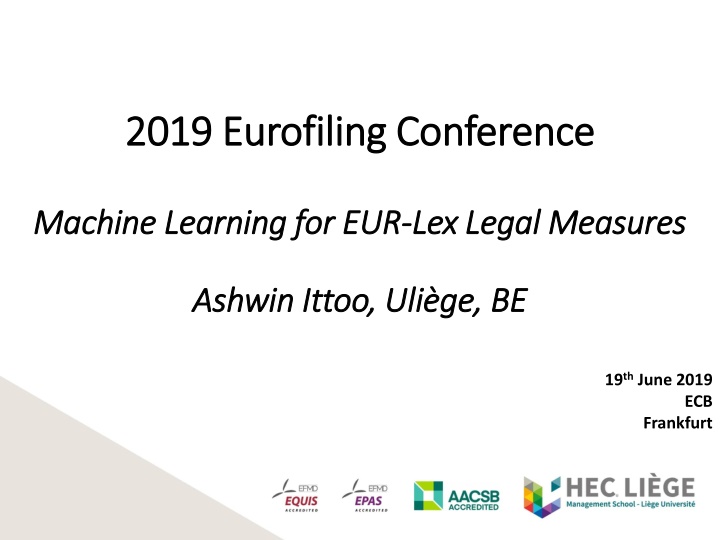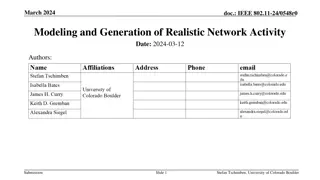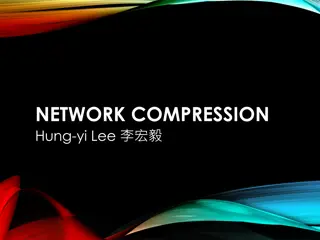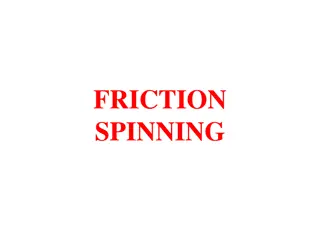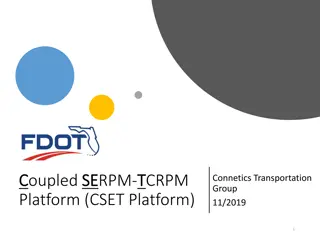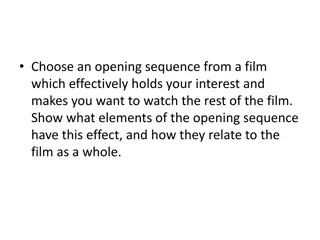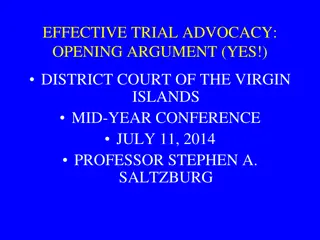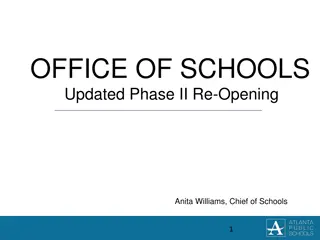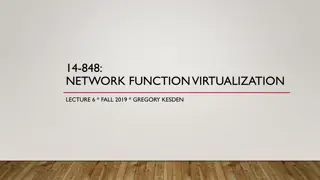Bayside Community Network Re-Opening Plan
Bayside Community Network, Inc. is preparing to re-open its Day, Employment, and Personal Supports Program with careful considerations for staff, capacity limits, consumer attendance scheduling, and safety protocols in response to COVID-19. The plan outlines key dates, operational practices, and guidelines to ensure a safe and phased re-opening process for both staff and consumers.
Download Presentation

Please find below an Image/Link to download the presentation.
The content on the website is provided AS IS for your information and personal use only. It may not be sold, licensed, or shared on other websites without obtaining consent from the author.If you encounter any issues during the download, it is possible that the publisher has removed the file from their server.
You are allowed to download the files provided on this website for personal or commercial use, subject to the condition that they are used lawfully. All files are the property of their respective owners.
The content on the website is provided AS IS for your information and personal use only. It may not be sold, licensed, or shared on other websites without obtaining consent from the author.
E N D
Presentation Transcript
2019 2019 Eurofiling Eurofiling Conference Conference Machine Learning for EUR Machine Learning for EUR- -Lex Legal Measures Lex Legal Measures Ashwin Ashwin Ittoo Ittoo, , Uli ge Uli ge, BE , BE 19thJune 2019 ECB Frankfurt
About Myself About Myself HEC Li ge, University of Li ge, BE Japan Advanced Institute of Science & Tech, JP Expertise Machine Learning/Deep Learning & NLP AI & Law Competition Law: Algorithmic Collusion Penal, Criminal Law: Bias & Fairness
Agenda Agenda Part 1: Laying out the foundations Scientific, Technical Background Part 2: Actual project Machine Learning for EUR-Lex Legal Measures
Machine Learning Intro Machine Learning Intro Machine Learning (ML) subfield of AI Other AI subfields Robotics Control & Automation Planning & Scheduling Heuristic Search & Optimization
ML Intro ( ML Intro (cont cont) ) Core principle Train a machine Learn how to perform a task From experience collected in the past Machine Computer, software, piece of hardware Tasks Predict sentiment of customer reviews Predict recidivism risk of offenders Recognize objects in images Experience Data collected in the past
How to Learn? How to Learn? Main paradigms Supervised Learning Unsupervised (self-supervised learning) Reinforcement Learning Most for agent-based systems Algorithmic Collusion
Supervised Learning (SL) Supervised Learning (SL) Most popular ML paradigm Learning from past data but Annotated/labeled with information of interest Sentiment (POS, NEG) Review: films adapted from comic books have had plenty of success , whether they're about superheroes ( batman , superman , spawn ) , or geared toward kids ( casper ) or the arthouse crowd ( ghost world ) , but there's never really been a comic book like from hell before . for starters , it was created by alan moore ( and eddie campbell ) , who brought the medium to a whole new level in the mid '80s with a 12-part series called the watchmen . to say moore and campbell thoroughly researched the subject of jack the ripper would be like saying michael jackson is starting to look a little odd . the book ( or " graphic novel , " if you will ) is over 500 pages long and includes nearly 30 more that consist of nothing but footnotes . in other words , don't dismiss this film because of its source . if you can get past the whole comic book thing , you might find another stumbling block in from hell's directors , albert and allen hughes . getting the hughes brothers to direct this seems almost as ludicrous as casting carrot top in , well , anything , but riddle me this : who better to direct a film that's set in the ghetto and features really violent street crime than the mad geniuses behind menace ii society ? the ghetto in question is , of course , whitechapel in 1888 london's east end . Sentiment: POS
Supervised Learning ( Supervised Learning (cont cont) ) Data Annotated/labeled with information of interest Recidivism Risk Scores Data used for training COMPAS system Decision support tool in certain US Courts
Supervised Learning ( Supervised Learning (cont cont) ) SL in a nutshell Feed millions of annotated/labelled data examples to machine (algorithm) Ask algorithm to learn which variables are most predictive Words, parts-of-speech sentiment Age, education level, sex recidivism risk Process known as TRAINING Various SL algorithms
Supervised Learning ( Supervised Learning (cont cont) ) Algorithms for Training Tree-based Decision-trees, Random Forest Support Vector Machines Neural Networks And many others
Tree Tree- -Based Based Learns a Decision-tree or Random Forest from training data Sex male female Given new case Follow tree branches/values Make prediction Age > 45 <= 45 Many variants Gradient boosted trees Ensemble of trees High Risk No Risk Medium Risk
Support Vector Machines (SVM) Support Vector Machines (SVM) Learns decision boundaries Maximizes separation between examples High vs. low risk POS vs. NEG sentiment Source: stackexchange
Artificial Neural Networks Artificial Neural Networks Interconnected neurons Responsible for most of the computation Tries to predict dependent variable, recidivism risk e.g. Independent variable, e.g. age, past cases, sex,.. 14
Artificial Neural Artificial Neural Networks ( Networks (cont cont) ) At each neuron j Outputs of previous neurons; x1,x2, x3 Apply weights; w1,w2, w3 Sum & Apply activation function, f(.) Result input to next neuron Repeat until final output neuron (prediction) At output layer, check predicted value Dependent variable value from dataset If prediction ok: stop Else: back-propagate error Adjust weights Until correct prediction 15
Deep Learning Deep Learning Artificial Neural Networks Large number of hidden layers (e.g. 10, 300) Performs more sophisticated/complex tasks Outperformed human champion at game of GO Learns masters level chess by playing against itself However High computational time & complexity Difficult to interpret models Common Applications Facebook Face Recognition Voice/Speech recognition, e.g. Siri, Alexa 16
Supervised Learning Limitations Supervised Learning Limitations SL matured learning paradigm But Presupposes annotated data Data in real-life not annotated Manual annotation expensive, time-consuming Unsuitability of SL for many applications Need for other learning paradigms 17
UNSUPERVISED/SELF UNSUPERVISED/SELF- -SUPERVISED LEARNING LEARNING SUPERVISED 18
Unsupervised/Self Unsupervised/Self- -Supervised Supervised No specific unsupervised methods Clustering Similarity metrics (cosine, Jacquard) PCA LDA Energy-based methods Auto-encoders Aim Not so much on prediction But discovering patterns in data 19
Unsupervised/Self Unsupervised/Self- -Supervised Self-Supervised Learning Unsupervised learning variant Data provides the supervision Supervised Finding semantically-similar words Synonyms Near-synonyms 20
Unsupervised/Self Unsupervised/Self- -Supervised Supervised Distributional Semantics Similar words tend to occur in similar contexts In the new regulation assets are defined as properties The regulation refers to derivatives as products Counterparty is specified in the regulation as Target words defined (as), refer (to), specified (as) Share similar meaning Share similar contexts Supervised Learning Formulation Target words = annotations Predicted from contexts 21
Unsupervised/Self Unsupervised/Self- -Supervised Supervised Train a neural network Predict target words given contexts Target words represented as word-embeddings Low-dimensional vectors, capturing semantics Well-known methods for generating word-embeddings Word2Vec (Google) FastText (Facebook) GLOVE (Stanford U) Methods used in Eur-Lex Project 22
Word Word Embeddings Embeddings Plot Plot Vectors (embeddings) of similar words are close to each other
Natural Language Processing (NLP) Natural Language Processing (NLP) Processing natural language, texts Machine Learning & Deep Learning Supervised & unsupervised Several sub-tasks Part-of-Speech (POS) Tagging Syntactic Parsing 24
End of Part 1 Questions?
Part 2: Eur-Lex Machine Learning Project
Project Team Project Team Myself PhD and Masters researchers at ULi ge
EUR EUR- -Lex ML Project Overview Lex ML Project Overview Objective Automatically analyze given set of EUR-Lex financial sector regulations Identify relevant legal concepts Related to supervisory reporting requirements Organize concepts in dictionary With references to where they occur URL, Articles or Section numbers Extract concept definitions Extracting reporting information banks shall submit their filings to the central authority Overarching Aim Generate supervisory reporting concept dictionary
Methodological Overview Methodological Overview Main methods employed NLP Unsupervised & self-supervised setting No annotations available Manual annotations not viable (expensive, time- consuming) Implemented in an NLP pipeline 3 main Work Packages (WP)/steps
Work Packages Work Packages Data Gathering Concept Extraction Relation extraction Definitions Report-to
WP1: Data Gathering WP1: Data Gathering Eur-Lex regulations published online (HTML) Example
Data Gathering ( Data Gathering (cont cont) ) Retrieve online HTML documents Store documents in local repository Implemented a web-crawler (spider) Starts from a predefined URL list (621 for prototype) Automatically selects EN version Reads and parses HTML documents Enriches contents with additional meta-data Useful for subsequent WP
Data Gathering ( Data Gathering (cont cont) ) Enriched HTML contents dumped locally Plain Text files (.txt) Lightweight Portable Crawled contents in text files
Data Gathering ( Data Gathering (cont cont) ) Crawler Characteristics Python implementation Lightweight Fast (621 documents approx. 1hr-1.5hr) Parses PDF & HTML
WP2: Concept Extraction WP2: Concept Extraction Identifying & extracting relevant legal concepts from crawled contents Concepts linguistically realized as terms Single-word: derivative Multi-word: credit derivative volume NLP algorithms for Term Extraction Initial approaches Linguistic Statistical (Linguistic & Statistical)
Concept Extraction ( Concept Extraction (cont cont) ) Linguistic Approach Terms are sequences of adjectives followed by any number of words Determine Part-of-Speech of each word in documents Terms dectected Futures and forwads Futures Swaps Securities Counterparty (side)
Concept Extraction ( Concept Extraction (cont cont) ) Statistical Approach Terms detected according to Occurrence frequencies /probabilities (single-word terms) Co-occurrence frequencies/probabilities (multi-word terms) Numerous statistical measures Mutual Information Chi-square Good results for 2 or 3-word terms
Concept Extraction ( Concept Extraction (cont cont) ) Several challenges posed by Eur-Lex project Terms not restricted to adjectives and nouns Very long terms Composed of > 4 words Financial assets designated at fair value through profit or loss Valid terms with low frequency/probability Annotated data/examples unavailable Require unsupervised approaches
Concept Extraction ( Concept Extraction (cont cont) ) Implemented novel, unsupervised Term Extraction algorithm Dynamic frequency threshold, t Varies depending on the document length Terms with frequency < t are discarded Keep tracks of terms positions in document Article, section, annex numbers Character positions (in progress)
Concept Extraction ( Concept Extraction (cont Example Input to Algorithm (crawled HTML in txt format) cont) )
Concept Extraction ( Concept Extraction (cont cont) )
Concept Extraction ( Concept Extraction (cont cont) ) Algorithm s Characteristics Implemented in Python Lightweight, easy to install Efficient Uses memoization ~35 000 characters analyzed per second
WP3: Semantic Relationship WP3: Semantic Relationship Extraction Extraction Data gathering Identifying concepts (terms) & positions Extracting Concepts definitions Reporting information (concept A shall submit to concept B ) Semantic Relationship Extraction in NLP No annotated data for current project Devise unsupervised methods
Semantic Relationship Extraction Semantic Relationship Extraction Extracting Concepts Definitions Various lexical patterns to express definitions In the new regulation assets is defined as properties The regulation refer to derivatives as products Counterparty is specified in the regulation as Challenge: Learn how definitions are expressed in documents automatically Unsupervised fashion Solution: Word Embeddings
Extracting Definitions Extracting Definitions Word embedding Low dimensional vector representation of words Vectors inherently captures semantic information Generated via neural networks E.g. Predict word given its contexts
Extracting Definitions ( Extracting Definitions (cont cont) ) Investigated different methods Word2Vec (Google) FastText (Facebook) GLoVE (U. Stanford) Generate word embeddings for words from Google news Wikipedia WebCrawl Eur-Lex corpus of financial sector regulations
Extracting Definitions ( Extracting Definitions (cont cont) ) Investigated different methods Word2Vec (Google) FastText (Facebook) GLoVE (U. Stanford) Generate word embeddings for words from Google news Wikipedia WebCrawl Eur-Lex corpus of financial sector regulations
Extracting Definitions ( Extracting Definitions (cont cont) ) Explicit definition word: (to) define Look up its vector (word embedding), v Compute distance(v, x), x = embedding of all other words If distance(v,x) < threshold x: vector word w Similar meaning as define Distance: Cosine of the angle between vectors
Extracting Definitions ( Extracting Definitions (cont cont) ) Recap Concepts extracted Identified how definitions are expressed Straightforward identification of concepts definitions in corpus False Positive Need only verbs
